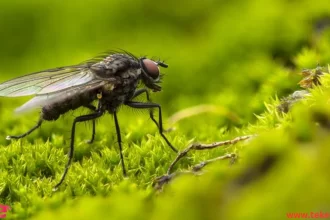The Eastern Gorilla is a species of gorilla found in Africa. It is the largest and least common species of gorilla.
Eastern Gorillas inhabit jungles and tropical forests, primarily in parts of East and Central Africa, alongside swamps in plains and secondary forests.
The Eastern Gorilla is a group of animals that includes the mountain gorilla, the eastern lowland gorilla, and the chimpanzee.
The Eastern Gorilla belongs to the family of primates, the order of large mammals, and the phylum of chordates. Its scientific name is Gorilla beringei.
Let’s learn more about it from teketrek.
Specifications of the Eastern Gorilla
Body: The Eastern Gorilla is a large primate characterized by its massive body, large size, and heavy weight.
Eastern gorilla height and Weight: Male Eastern Gorillas typically weigh between 300-440 pounds, while females usually weigh around 195-220 pounds. Its speed reaches up to 40 km/h.
Fur: The Eastern Gorilla’s body is covered with a coat of dark fur, which can be black, blue, brown, or gray in color. Males are significantly larger than females.
Fingers: Eastern Gorillas have five fingers on each hand, similar to humans, and five toes on each foot.
Ears and Mouth: It has relatively small ears and a mouth with 32 teeth.
Chest: The chest area of the Eastern Gorilla, like the face, hands, and abdomen, has less dense hair than the rest of the body.
Muscles: Eastern Gorillas have remarkable muscles that give them strength along the upper part of the body and under the arms. Because of these muscles, Eastern Gorillas use their fingers and thumbs like humans, easily gathering food from both high and low places.

Fascinating Facts and Interesting Information about the Eastern Gorilla
Male Eastern Gorillas, aged over 12 years, undergo a change in fur color, especially in the back area, where the fur changes from black to gray.
The nose prints of Eastern Gorillas can be used to identify each individual, much like human fingerprints. These prints are unique and cannot be identical to those of another individual.
Eastern Gorillas use around 25 different vocalizations to communicate with each other. They are highly intelligent and have many ways of communication.
Eastern Gorillas live in groups, and their social interactions depend on the group they belong to.
It is known that Eastern Gorillas spend about 40% of the day relaxing, 30% on activities related to food, and the remaining time is usually spent roaming.
Eastern gorilla habitat: Where are Eastern Gorillas found?
Eastern Gorillas inhabit various regions, with populations found in Uganda, Rwanda, and the Democratic Republic of the Congo.
They are found in the eastern plains and in the Virunga Mountains, as well as in the areas between Tanganyika and the Edward Lakes and the Luwalaba River.
What eats eastern gorillas?
Eastern Gorillas are primarily herbivorous, feeding on the plant cover in their natural environment. However, their diet can vary.
They feed on flowers, tree bark, and, in some cases, small invertebrates. Their diet also includes wild fruits and fungi.
Reproduction stages of the Eastern Gorilla
The Eastern Gorilla has a polygynous mating system, meaning the dominant male in each group mates with all the females. Mating season occurs throughout the year.
The gestation period for Eastern Gorillas lasts about eight and a half months, and they give birth to a single offspring once every three or four years due to their long gestation periods.
After birth, the Eastern Gorilla infant relies on its parents, especially the mother who carries it until it becomes capable of crawling, usually at the age of seven to nine weeks.
The Eastern Gorilla infant remains dependent on its parents until it reaches the age of four, with the mother continuing to breastfeed.
Reproduction in Eastern Gorillas begins at an early age of around 15 years old. Although the typical lifespan of Eastern Gorillas ranges between 35 and 40 years, they may live in captivity up to the age of 50.

FAQs about the Eastern Gorilla
What are the predators and threats facing the Eastern Gorilla?
It is habitat degradation, poaching, and violence. Many gorillas have been observed to have died due to being shot. Leopards and crocodiles are believed to be the primary predators of the Eastern Gorilla.
Do gorillas attack humans?
Gorillas need to be approached with extreme caution. Gorillas were previously described as violent animals that could kill any human they encounter.
What is the strength of a gorilla?
Estimates suggest their strength is about six times that of the strongest human on earth. They weigh over 250 kg and can run at speeds of up to 40 km/h.
Why is the eastern gorilla endangered?
HABITAT LOSS AND FRAGMENTATION
As humans have expanded from densely populated areas in the East into the gorilla’s territory, they have destroyed and fragmented large portions of the gorilla’s forest habitat to create space for agriculture and livestock.
Can a gorilla live for 100 years?
In the wild, gorillas typically live for 30 to 40 years, but under human care, they can live into their 50s.
At the end of our article, it’s important to highlight the ongoing efforts. Several projects have been initiated to conserve the endangered Eastern Gorilla.One such initiative is the Walikale Gorilla and Forest Conservation Project, which was launched in 2001.





